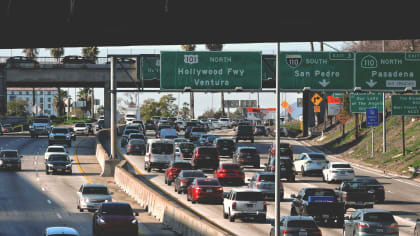Review: 2020 Mazda 3 Hatchback
Published on Sat, Aug 1, 2020
By: Brian Kennedy
The new Mazda 3 Hatchback is authentically Mazda, however the absurd price tag is bound to restrict that wallet to your pocket.
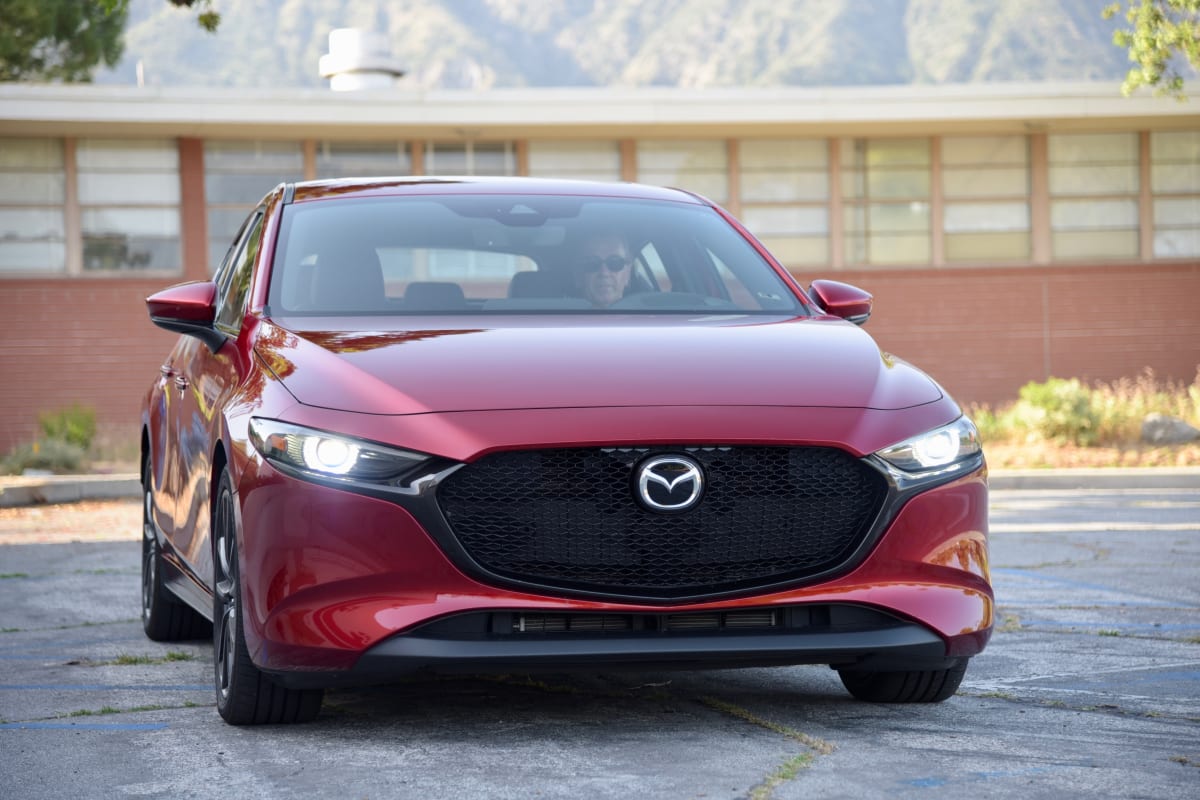
186 HP, naturally aspirated. Leather, perforated seats, accent stitching that carries on from the seats to the dash. All-wheel drive. Styling that won a big award. The Mazda 3 Hatchback (equipped with AWD and Premium Package as I drove it) has all of that, and most of what it does, it does very well. The negatives? It’s small and cramped inside, and you can’t see out the back thanks to that same styling which is so pretty in street view. And it’s far, far too expensive. How much? Let’s get to that in a moment.
First, the thing that I seem to fixate on in every review, because almost nobody gets it right—the audio system. I hate radios that don’t work intuitively. I was quite impressed with the radio in the Toyota Yaris I drove a few weeks ago, and that that car is a rebadged Mazda2. Thus, I am unpleasantly surprised at how difficult it is to do simple things with the radio in the Mazda3 Hatchback. Why isn’t Mazda consistently good with this function?
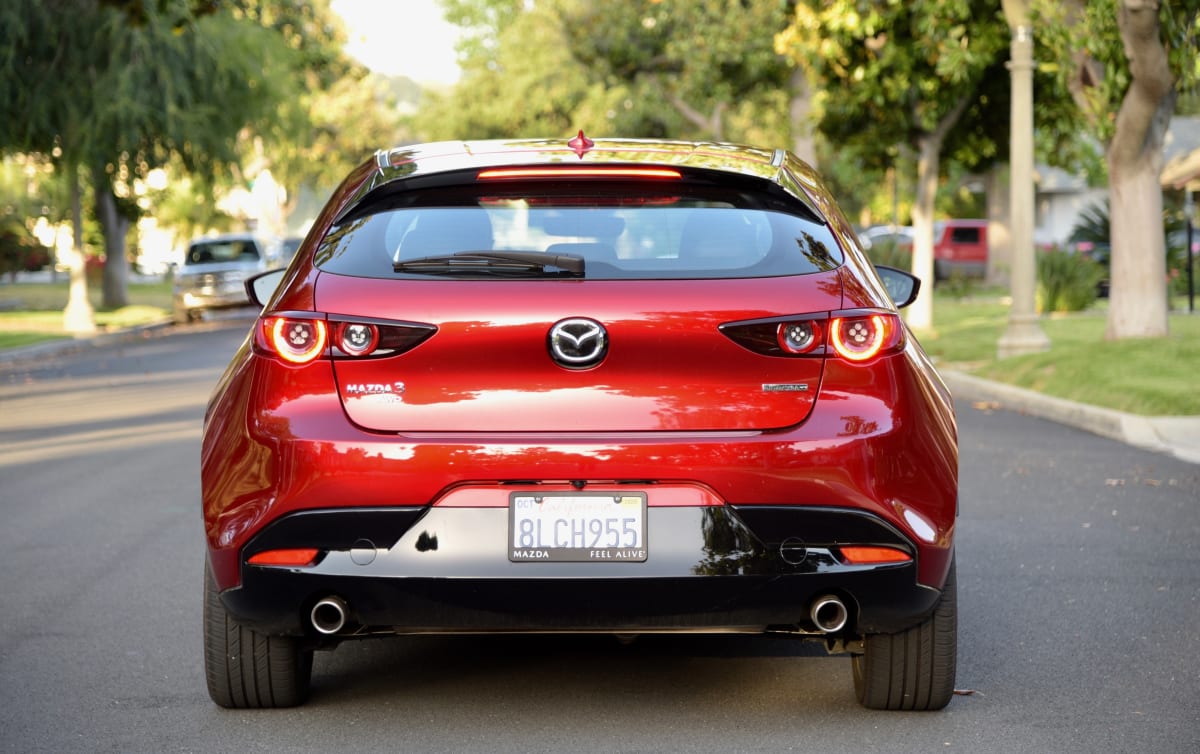
After fooling with buttons and wheels for twenty minutes and trying desperately to find instructions in the manual, I gave up in my quest to tune CNN on the Satellite radio receiver in the Mazda3. None of the following—radio, audio, sound system, and other synonyms I can’t remember now—appeared in the index to the manual. Try to find this section yourself in the car’s big manual (the shorter version wasn’t in the car I had given to me) and see what happens.
Maybe the car didn’t have Satellite, you say? It did, and I got three channels. I couldn’t find the others. Why does it have to be this hard?
To stay with the gripes: this car has decent fitments, but it’s not luxe by any means. And the AC isn’t terrific, even in 80-degree weather, so who knows if it’ll push out enough Arctic on a hot Pasadena summer day. In addition, the quality of the interior materials lacks sharpness. In the Mazda3, you ought to feel like you’re in a car that’s much better than the Mazda2/Yaris. You don’t. That little buggy had less style, but the cockpit appointments were sporty like an F1 car, and top-notch for the money. The Mazda3 doesn’t have that same wow factor.
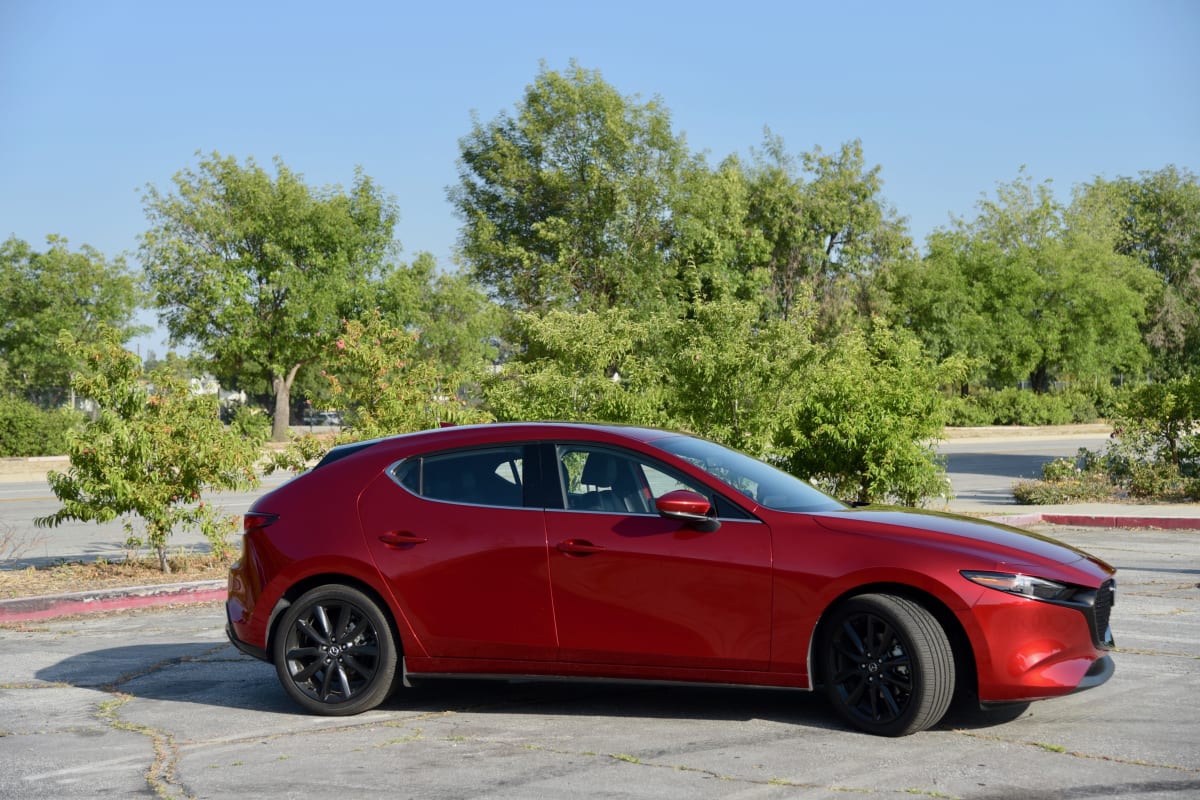
With that out of the way, the Mazda3 has useful wagon functionality, but the rear hatch window is punishingly small and thus hard to see out of, a concession to the styling of the car’s rear end. Now, I’m not going to argue with the looks of the front end, and I’m fully aware that this car won the World Car Design of the Year for 2020. It deserves it, but the payback is that the interior is not spacious.
I also admire the mile-deep quality of the paint, which is called Soul Red Crystal Metallic and comes as an option for an additional $595. Totally worth it.
Inside, the seating is sporty and the paddle shifters a ton of fun—kind of proving the old, “It’s more fun to drive a slow car fast than a fast car slow” adage. To add to the benefits, there’s a sunroof. There are cool little touches like a real-time MPG meter you can display on the instrument panel. There’s the zoominess of the (slightly unrefined, at least going by the sound at start-up) engine. A general tightness to the driving experience is complimented by the sport mode available at the flick of a toggle switch. But there’s also a tinny feeling to the doors that I thought went away in compact cars years ago.
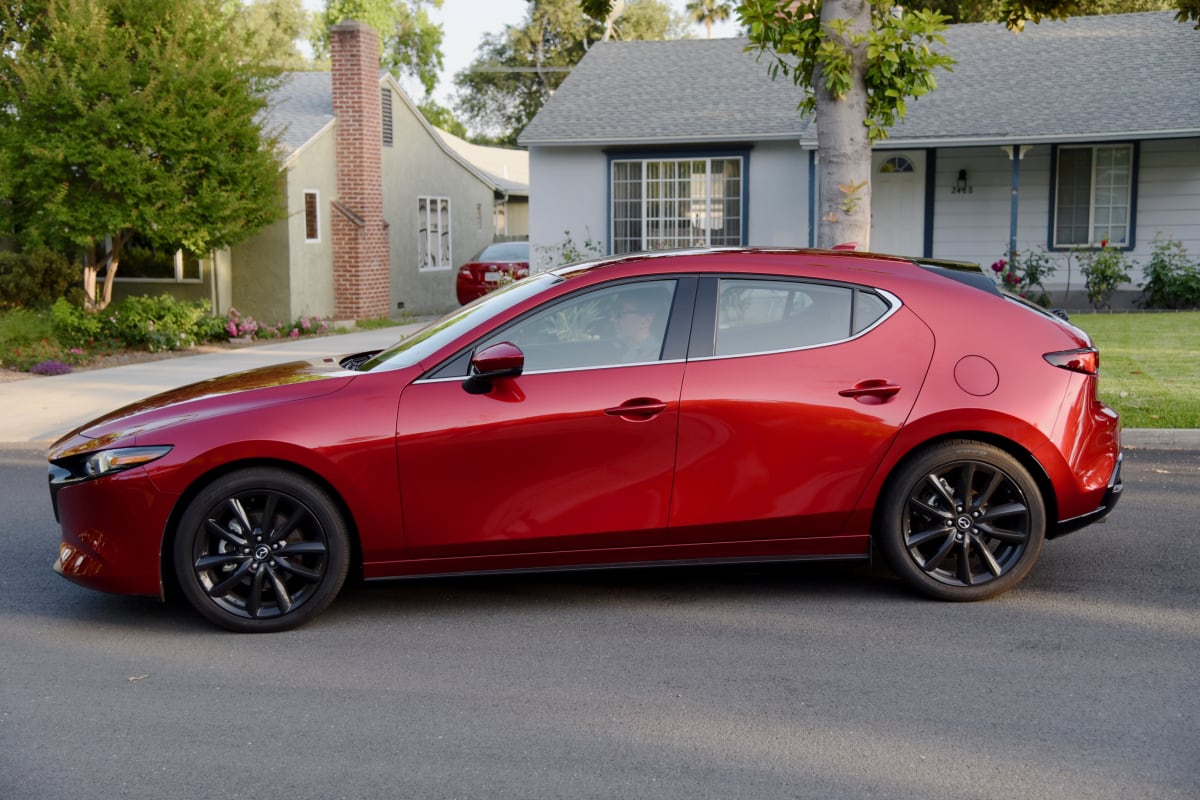
The back seat, in addition, is like the one in my Mustang GT. It’s there, and adults can fit into it, but nobody wants to, because you end up sitting with your knees under your chin. Probably no one except a child would be comfortable in the back for long stretches. The front seatbacks almost touch the rear seat bottom when the front passenger and driver are even normal-sized and have their seats adjusted accordingly.
The cargo area is not large, but big enough to throw a superstore load of whatever inside, and the lift-in is non-existent with the hatch door up and out of the way, so it’s super-easy to use the space there is.
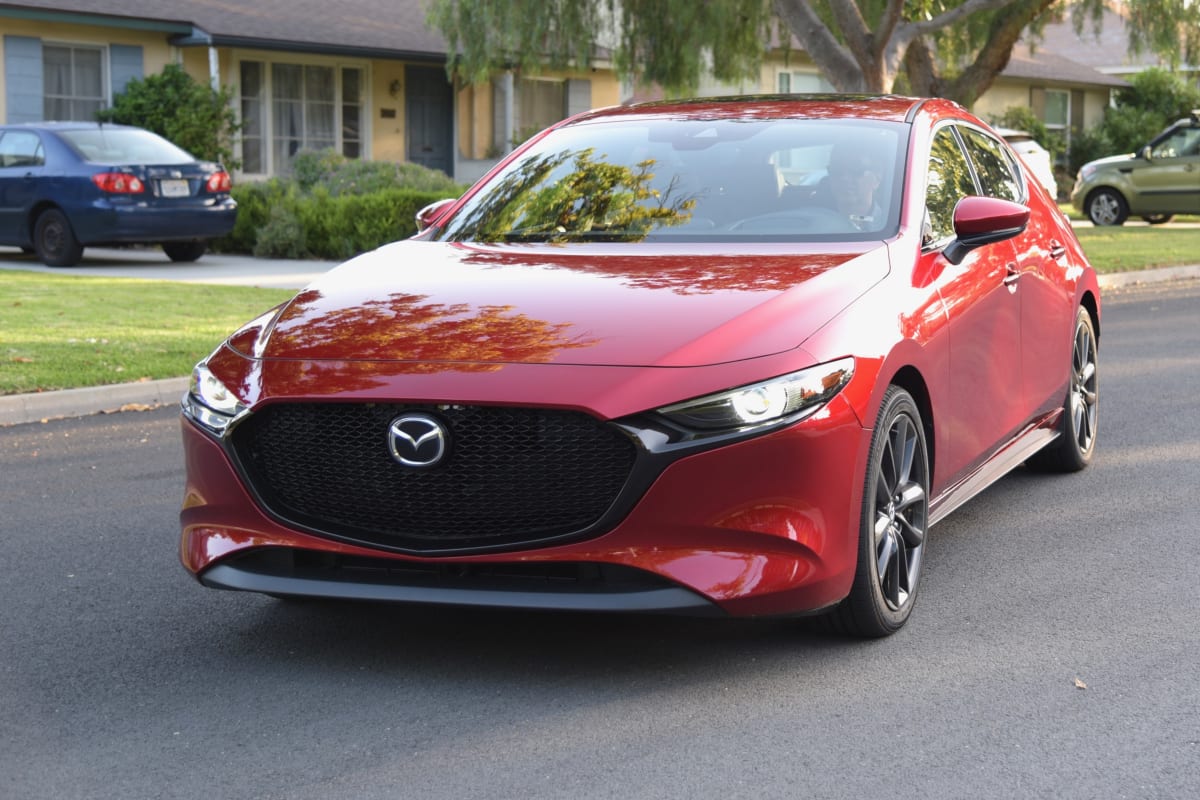
The engine is a normally aspirated 2.5 liter four-cylinder pushing out a decent 186HP through a six-speed auto (and auto-manual) gearbox. All of that is sold as being resplendent of SKYACTIV-G with G-Vectoring Control Plus technology, which is pretty much marketing babble. Put in simple terms—it’s a (relatively for these days) decent-sized four-pot mill with enough oomph to get you where you’re going in reasonable time given the small size and light weight of the car.
The driving experience yields fun and tightness. The road is sufficiently isolated without the feel being vague. It’s a driver’s-car experience, albeit not in the raw way that a GTI might offer. Better than the Impreza which is its muted and muffled AWD competitor, though. When you mash the gas in the Mazda, there’s no hesitation, though neither is the power devastating.
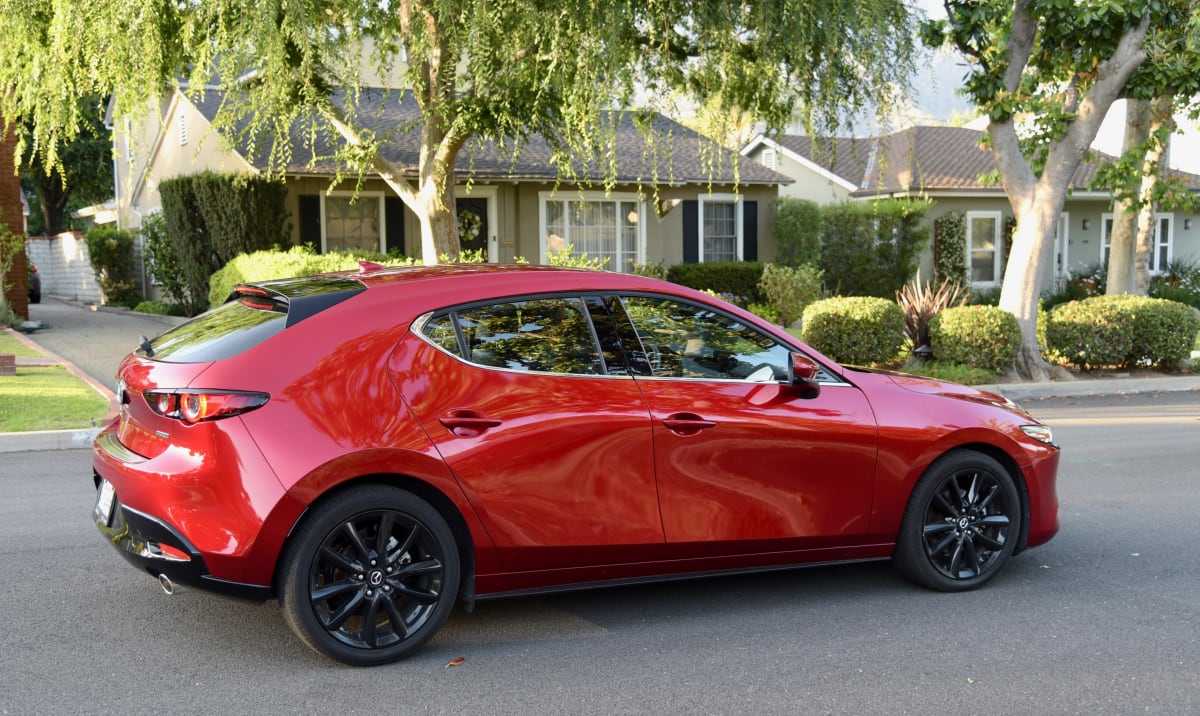
So should you buy one? There’s little competition in the AWD wagon category, Subaru’s offerings notwithstanding. And the segment of wagons altogether is not huge. So partly, your decision might not be between this wagon and a competitor hatchback, but between this iteration of an economy car and another one, like a small Nissan CUV (Kicks, say, or Rogue Sport) or a Nissan Sentra, available, alas, only as a four-door. (The Mazda3, for that matter, is available as a conventional four-door sedan as well.)
When you’re dealing in a micro-segment, you’re really cross-shopping ideas as much as actual cars, and once you’ve settled on which idea suits you best, going for a car in that segment. To me, a stylish hatchback is a good idea, though if gaining cargo is the idea when you buy the Mazda3, your gain over a small sedan with a big trunk, as most have now, is minimal—a little bit of height clearance is about it.
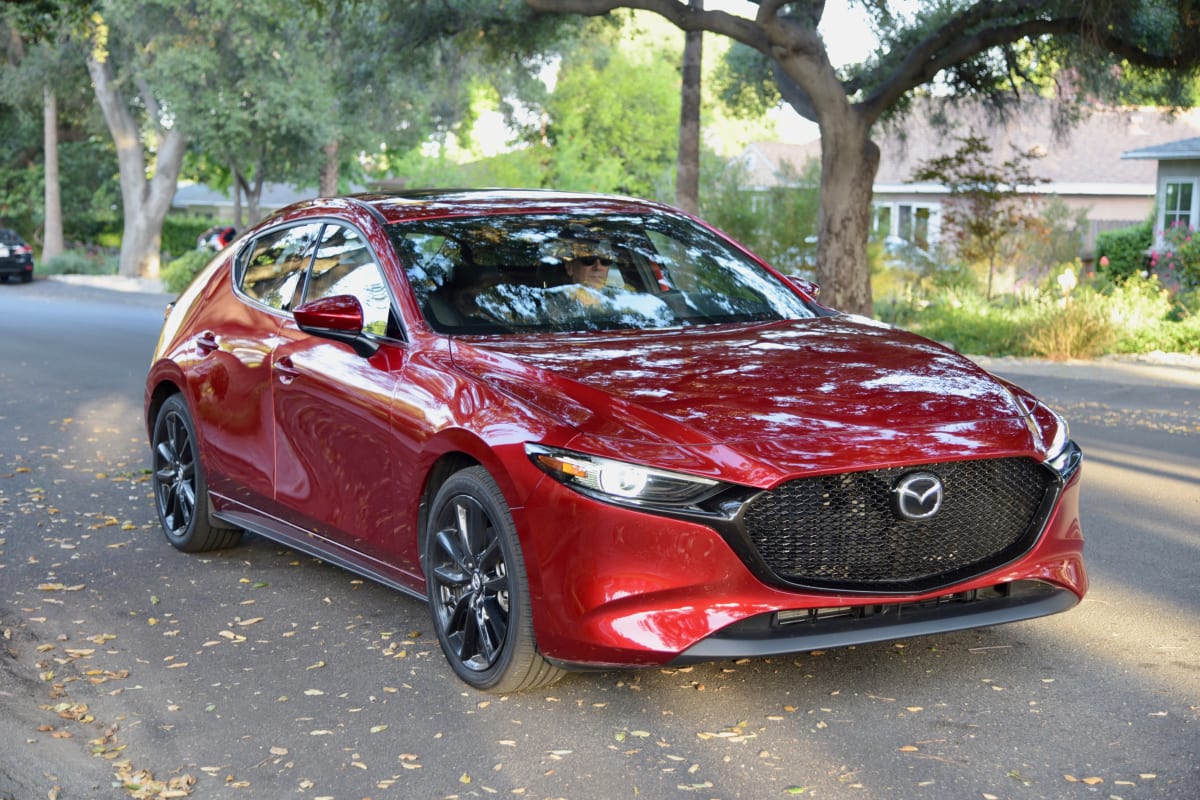
But let’s say you like that slight gain in utility and are crazy about the Mazda3’s looks. Here’s the big elephant in the room: this car costs way, way too much. Like the sticker is $32 thousand.
The car feels like it would be a heck of a bargain at $25 grand, but then you find that the real price is far higher, and a bit of research shows that you can get a more-or-less equivalent Toyota Corolla Hatchback XSE for around $26,900, and a Subaru Impreza (with AWD standard) in Limited trim for around $29,500. At that point, it’s game over. Even more so when you realize that there are a few Golf models in that same bracket, and the Honda Civic hatchback sport touring is just under 29k with all kinds of equipment including a killer stereo (but no AWD).
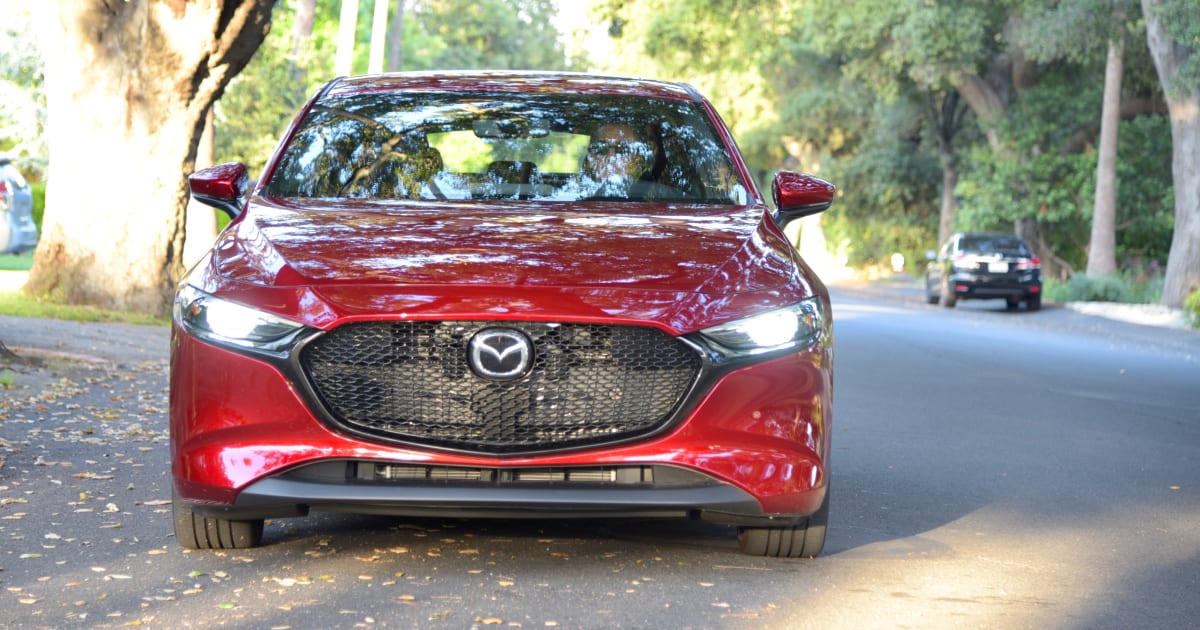
The window sticker on this Mazda makes you think these Mazda people very cheeky. In truth, I feel sorry for the salesperson who has to convince you not to offer $27,000 and tell the “closer” in the dealership to take it or leave it, because only foolish love would make it seem like a good idea to go any higher. But who feels sorry for car salespeople?
I tried to rationalize the price of the Mazda. It has more HP than the other cars I mentioned. There’s AWD, which the Toyota can’t offer (and most people don’t need, but some Californians ski or snowboard, and it’s mandatory when it snows at high elevations, unless one wishes to deal with the nuisance of chains). Maybe the Mazda is better screwed together than potential competitors, but I don’t see why that would be so, and the equipment list may be fairly lengthy, but so are the ones on the competition.
No, there are no two ways about it—at this trim level, at this price, there’s not much of a market for this car except amongst the Mazda faithful.
